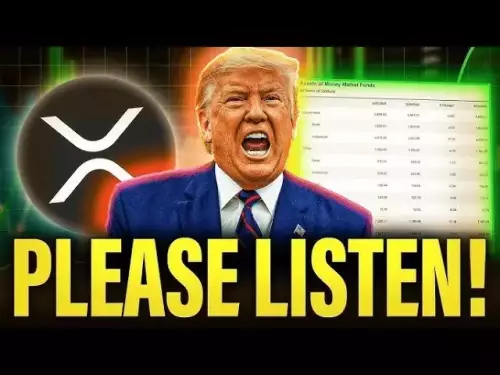 |
|
 |
|
 |
|
 |
|
 |
|
 |
|
 |
|
 |
|
 |
|
 |
|
 |
|
 |
|
 |
|
 |
|
 |
|
The Lightning Network is a second-layer solution designed to address Bitcoin's scalability issues by enabling faster and more cost-effective transactions.

The Bitcoin Lightning Network is a second-layer solution that builds on the Bitcoin blockchain to enable faster and more cost-effective transactions. It's designed to address Bitcoin's scalability issues, which arise from the main chain’s limited throughput.
As transaction volume increases, especially during periods of high activity, the Bitcoin network can become congested, leading to slower transaction times and higher fees as miners prioritize transactions with higher fees. This characteristic of Bitcoin has been a subject of discussion, with some arguing that it undermines the cryptocurrency’s efficiency, particularly for small-value payments.
To solve this problem, Joseph Poon and Tadge Dryja proposed the Lightning Network in 2015, drawing on Satoshi Nakamoto’s concept of payment channels. Their idea was to move transaction activity off the main chain to reduce congestion and allow for faster transaction speeds.
Poon and Dryja’s proposal was based on two-party channels, where users could lock up Bitcoin in a shared address and then transfer funds directly through a series of cryptographic signatures, effectively performing transactions “off-chain.” These transactions would only be settled on-chain when the channel was closed, allowing for multiple transactions to be bundled into a single blockchain transaction, thereby reducing transaction costs.
After the initial proposal, development on the Lightning Network began in 2014 with the release of a beta version of the software by Lightning Labs. The project quickly gained traction with the support of industry figures like Jack Dorsey, CEO of Block (formerly Square), who integrated the Lightning Network into the company’s payment services.
Over time, the ecosystem around the Lightning Network has expanded with the development of new technologies and services. Some notable innovations include Keysend, which enables users to easily receive payments through a unique code, and Wumbo Channels, which allow for larger channel capacity.
Several services have also been launched to facilitate and enhance the use of the Lightning Network. Loop, developed by Bitcoin startup Agiro Technologies, enables users to seamlessly transfer funds between their Lightning Network wallets and centralized cryptocurrency exchanges. Pool, a service created by Lightning Labs, allows users to aggregate small payments into larger batches for more efficient processing.
Taro, developed by Blockstream, introduces the capability to mint and transfer tokenized assets on the Lightning Network, expanding its functionality beyond Bitcoin. Faraday, a service created by Lightning Labs, focuses on providing a user-friendly interface for interacting with the Lightning Network, aiming to make it more accessible to a broader audience.
Through these innovations and services, the Lightning Network ecosystem continues to evolve, expanding the possibilities for using Bitcoin in new and interesting ways.
Key Benefits of the Lightning Network
The Lightning Network offers several advantages that enhance Bitcoin’s usability and expand its potential use cases.
1. Scalability
As a second-layer solution operating parallel to the main Bitcoin chain, the Lightning Network can process transactions much faster and more efficiently, overcoming the throughput limitations of the Bitcoin blockchain. This property is crucial for handling the increasing transaction volume during periods of high activity.
2. Speed
Transactions on the Lightning Network are typically executed within a few seconds, in contrast to the average transaction times on the Bitcoin blockchain, which can vary but are usually measured in minutes. This speed differential is due to the time required for miners to include transactions in a block and the varying levels of congestion on the network.
3. Cost-Effectiveness
Transaction fees on the Lightning Network are significantly lower than those charged by the Bitcoin blockchain. The fee structure on the Lightning Network is designed to compensate nodes for routing transactions and keeping the network liquid. In comparison, transaction fees on the Bitcoin blockchain are determined by miners, who prioritize transactions with higher fees, especially during periods of high congestion.
4. Decentralization
Similar to the Bitcoin blockchain, the Lightning Network is decentralized, with no single entity controlling the network or having special privileges. This characteristic ensures that the network remains open and accessible to all users.
How the Lightning Network Works
The core of the Lightning Network is formed by payment channels established between two parties. To open a channel, both users contribute funds to a shared address controlled by a cryptographic technology called a Hash Time Lock, also known as a Paymaster. This technology, developed by Blockstream, enables the creation of atomic transactions, where multiple operations are linked together and either all succeed or none.
In this case, the Paymaster script ensures that either both users can withdraw their initial contributions or, if one user’s private key is used, the other user receives the entire channel balance. This property is crucial for channel security, as it prevents one user from being able to steal funds from the other.
Transactions within a channel are executed off-chain through a series of cryptographic signatures, allowing for instant fund transfers and reducing the workload on the main blockchain. When the channel is closed, only the final transaction is recorded on-chain, summarizing the series of transactions that occurred off-chain.
The network extends beyond direct channels by routing payments through intermediate nodes, enabling two parties who may not have a channel
Clause de non-responsabilité:info@kdj.com
Les informations fournies ne constituent pas des conseils commerciaux. kdj.com n’assume aucune responsabilité pour les investissements effectués sur la base des informations fournies dans cet article. Les crypto-monnaies sont très volatiles et il est fortement recommandé d’investir avec prudence après une recherche approfondie!
Si vous pensez que le contenu utilisé sur ce site Web porte atteinte à vos droits d’auteur, veuillez nous contacter immédiatement (info@kdj.com) et nous le supprimerons dans les plus brefs délais.



























































